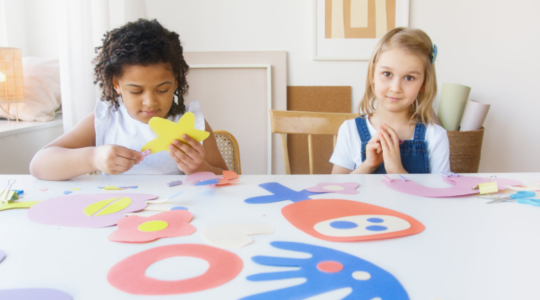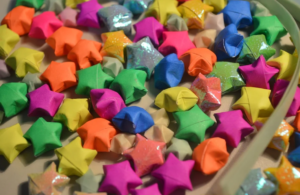Benefits of Origami for Kids’ Fun Science at Home

As children have stayed at home for a long, you might want to come with an idea to have fun entertainment incorporated with science and math at home for kids. In this case, origami would be one of the best choices. This traditional Japanese art invites people to have a fun crafting activity while folding paper to produce impressive shapes. However, if you want more advanced activity suggestions, you might want to check a stem fun article for home learning and fun entertainment.
 When talking about origami, you might wonder how a folding paper activity can generate fun learning for kids. Let’s take a look at a brief history of origami. The term origami originates from the Japanese word ori, meaning to fold, and kami, meaning paper. The early development of origami was around earlier of seventeenth-century before becoming famous around the world. In the beginning, only wealthier people can practice this art because the paper was so expensive. However, it becomes cheaper, enabling people of all socioeconomic classes can benefit from this craft.
When talking about origami, you might wonder how a folding paper activity can generate fun learning for kids. Let’s take a look at a brief history of origami. The term origami originates from the Japanese word ori, meaning to fold, and kami, meaning paper. The early development of origami was around earlier of seventeenth-century before becoming famous around the world. In the beginning, only wealthier people can practice this art because the paper was so expensive. However, it becomes cheaper, enabling people of all socioeconomic classes can benefit from this craft.
As you have well understood, origami is about turning a flat sheet of paper into a sculpture using folding and shaping techniques. Such simple folding and shaping techniques deal with a number, geometry, and spatial relations that anyone can do to produce an origami sculpture, especially children. Therefore, many children can enjoy origami so much that more educators use this tool for teaching and therapy.
Educational Benefits
 Children can benefit greatly from practicing and learning the art of origami. It happens because origami making involves both hands and the whole mind. Researchers have also found that it stimulates the language component of thinking. Children also have hands-on experiences with spatial relationships, reading comprehension, math, and sequencing. Some of these incredible things that children can learn through origami include understanding fractions and ratios.
Children can benefit greatly from practicing and learning the art of origami. It happens because origami making involves both hands and the whole mind. Researchers have also found that it stimulates the language component of thinking. Children also have hands-on experiences with spatial relationships, reading comprehension, math, and sequencing. Some of these incredible things that children can learn through origami include understanding fractions and ratios.
Math is not the only subject where teachers use origami as a teaching tool. Science and social studies classes also benefit from the use of these early works of art. Also, teachers have found origami valuable for building multicultural awareness and introducing children to creative writing, literature, and poetry.
Emotional Benefits
Not only educators but also therapists find that there is a significant advantage of origami for children. As they use more effort to coordinate their hands to fold origami, this activity can improve the child’s motoric skills. Besides, it enhances the memory positively as children process making origami using their imagination. Furthermore, as parents and other parties give them an overall attention span to produce impressive crafting, children can boost their self-esteem. More importantly, the habit of creating a sculpture causes the child to focus on the work rather than thinking about things that trigger feelings of stress in him.
Entertainment Benefits
 In its most manageable form, origami needs nothing more than some sheets of paper. There is no need for a high price or potentially harmful equipment, and it enables parents to experience a fun activity and communicate with their children without much preparation. It’s fun, it takes a little time, and children enjoy the satisfaction they get from completing a sculpture and the opportunity to share that accomplishment with their parents, family, and friends.
In its most manageable form, origami needs nothing more than some sheets of paper. There is no need for a high price or potentially harmful equipment, and it enables parents to experience a fun activity and communicate with their children without much preparation. It’s fun, it takes a little time, and children enjoy the satisfaction they get from completing a sculpture and the opportunity to share that accomplishment with their parents, family, and friends.
Children as young as four can fold the paper and, with an adult by their side, can create simple origami designs. By the time children are about eight years old, they usually follow and read origami instructions themselves. However, they may need help with some of the more advanced activities. Although the most famous sculpture is probably the crane, children can create a broad collection of various engaging and fun sculptures. Many origami patterns are simple enough for beginners to understand.
